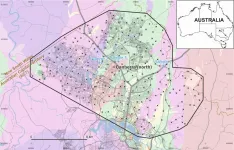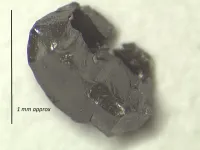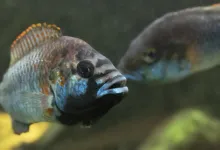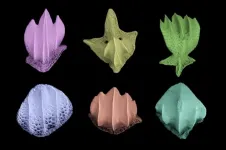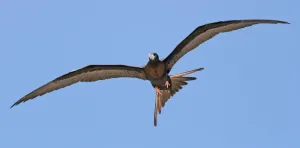(Press-News.org) Researchers at Karolinska Institutet in Sweden publish new findings in the journal Cancer Discovery showing how pharmacological activation of the protein p53 boosts the immune response against tumours. The results can be of significance to the development of new combination therapies that will give more cancer patients access to immunotherapy.
Given its ability to react to damage to cellular DNA and the key part it is thought to play in preventing tumour growth, the protein p53 has been dubbed the "guardian of the genome". Half of all tumours have mutations in the gene that codes for the protein, and in many other tumours, p53 is disabled by another protein, MDM2.
It has long been known that p53 is able to silence certain sequences in our genome called endogenous retroviruses (i.e. DNA elements evolutionarily inherited from viruses), thus preventing genome instability. The researchers now show that the protein can also activate these sequences in cancer cells, leading to anti-tumour immune response.
"This was an astonishing discovery. When we blocked the suppressor MDM2, p53 activated endogenous retroviruses which induced antiviral response and boosted the production of immune-activating interferons," says lead investigator Galina Selivanova, Professor at the Department of Microbiology, Tumor and Cell Biology, Karolinska Institutet.
The results were obtained when the researchers blocked MDM2 in mouse models using a substance coded as ALRN-6924 from the US company Aileron Therapeutics. The increase of interferon response was also seen in tumour samples from two patients taking part in the company's clinical trials of ALRN-6924.
"This shows that there are synergies that should be exploited between substances that block MDM2 and modern immunotherapies," Professor Selivanova continues. "A combination of these can be particularly important for patients who don't respond to immunotherapy."
Immunotherapy, or immuno-oncology, is described as a revolution in modern cancer treatment in the way it triggers the body's immune system to fight cancer cells. However, it does not work with all patients, and the presence of interferons could be a biomarker for whether or not immunotherapy will prove efficacious.
"If we can increase the level of interferons, we can therefore increase the chances that the immunotherapy will succeed."
Professor Selivanova is a pioneer in research on how mutated p53 can be re-activated using special molecules, one of which, APR-246, is undergoing clinical studies under the name Eprenetapopt at Aprea Therapeutics, a company that she co-founded.
"We now want to examine if Eprenetapopt produces the same interferon boost and can have the same potential to increase access to immunotherapy for patients with severe forms of cancer," she says.
INFORMATION:
The study was conducted at Karolinska Institutet and financed by the Swedish Cancer Society, the Swedish Research Council and Karolinska Institutet. Co-authors Vincent Guerlavais, Luis A. Carvajal, Manuel Aivado and D. Allen Annis are all employed by Aileron Therapeutics.
Publication: "Pharmacological activation of p53 triggers viral mimicry response thereby abolishing tumor immune evasion and promoting anti-tumor immunity". Xiaolei Zhou, Madhurendra Singh, Gema Sanz Santos, Vincent Guerlavais, Luis A. Carvajal, Manuel Aivado, Yue Zhan, Mariana M.S. Oliveira, Lisa S. Westerberg, D. Allen Annis, John Inge Johnsen and Galina Selivanova. Cancer Discovery, online 6 July 2021, doi: 10.1158/2159-8290.CD-20-1741.
Scientists have taken the first steps in developing a new method of identifying the movements of criminals using chemical analysis of soil and dust found on equipment, clothing and cars. The locating system allows police or security services to match soil remnants found on personal items to regional soil samples, to either implicate or eliminate presence at a crime scene. The work is presented as a Keynote Lecture at the Goldschmidt Geochemistry Conference, after recent publication.
Dr Patrice de Caritat, Principal Research Scientist at Geoscience Australia, Australia's public sector geoscience organisation, said:
"We've ...
A unique study of ancient diamonds has shown that the basic chemical composition of the Earth's atmosphere which makes it suitable for life's explosion of diversity was laid down at least 2.7 billion years ago. Volatile gases conserved in diamonds found in ancient rocks were present in similar proportions to those found in today's mantle, which in turn indicates that there has been no fundamental change in the proportions of volatiles in the atmosphere over the last few billion years. This shows that one of the basic conditions necessary to support life, the presence of life-giving elements in sufficient quantity, appeared soon after Earth formed, and has remained fairly constant ever since.
Presenting the work at the Goldschmidt ...
Below please find summaries of new articles that will be published in the next issue of Annals of Internal Medicine. The summaries are not intended to substitute for the full articles as a source of information. This information is under strict embargo and by taking it into possession, media representatives are committing to the terms of the embargo not only on their own behalf, but also on behalf of the organization they represent.
1. Infusion centers associated with substantially better outcomes than the ER for patients with acute pain events and sickle cell disease
Abstract: https://www.acpjournals.org/doi/10.7326/M20-7171
Editorial: https://www.acpjournals.org/doi/10.7326/M21-2650
Summary: ...
LAWRENCE -- A new paper from a lead author based at the University of Kansas finds wetlands constructed along waterways are the most cost-effective way to reduce nitrate and sediment loads in large streams and rivers. Rather than focusing on individual farms, the research suggests conservation efforts using wetlands should be implemented at the watershed scale.
The paper, just published in the Proceedings of the National Academy of Sciences, relied on computer modeling to examine the Le Sueur River Basin in southern Minnesota, a watershed subject to runoff from intense agricultural production of corn and soybeans -- crops characteristic of the entire ...
In the movie "A Fish Called Wanda", the villain Otto effortlessly gobbles up all the occupants of Ken`s fish tank. Reality, however, is more daunting. At least one unfortunate fan who re-enacted this scene was hospitalized with a fish stuck in the throat. At the same time this also was a painful lesson in ichthyology (the scientific study of fishes), namely that the defense of some fishes consists of needle-sharp fin spines.
Two types of fin elements
Indeed, many fish species possess two types of fin elements, "ordinary" soft fin rays, which are blunt and flexible and primarily serve locomotion, and fin spines, which are sharp and heavily ossified. As fin spines serve the ...
For 400 million years, shark-like fishes have prowled the oceans as predators, but now humans kill 100 million sharks per year, radically disrupting ocean food chains. Based on microscopic shark scales found on fossil- and modern coral reefs in Caribbean Panama, Smithsonian scientists reveal the changing roles of sharks during the last 7000 years, both before and after sharks in this region were hunted. They hope this new use for dermal denticles will provide context for innovative reef conservation strategies.
Microscopic scales covering a shark's body--dermal ...
A study published the week of July 5 in the Proceedings of the National Academy of Sciences led by Michael Moore at Washington University in St. Louis finds that dragonfly males have consistently evolved less breeding coloration in regions with hotter climates.
"Our study shows that the wing pigmentation of dragonfly males evolves so consistently in response to the climate that it's among the most predictable evolutionary responses ever observed for a mating-related trait," said Moore, who is a postdoctoral fellow with the Living Earth Collaborative at Washington University.
"This work reveals that mating-related traits can be just as important to how organisms ...
Scientists recently made news by using fossil shark scales to reconstruct shark communities from millions of years ago. At the same time, an international team of researchers led by UC Santa Barbara ecologist Erin Dillon applied the technique to the more recent past.
Human activities have caused shark populations to plummet worldwide since records began in the mid-20th century. However, the scientists were concerned that these baseline data may, themselves, reflect shark communities that had already experienced significant declines. Dillon compared the abundance and variety of shark scales from a Panamanian coral reef 7,000 years ago to those in reef sediments ...
A vast seabird colony on Ascension Island creates a "halo" in which fewer fish live, new research shows.
Ascension, a UK Overseas Territory, is home to tens of thousands of seabirds - of various species - whose prey incudes flying fish.
The new study, by the University of Exeter and the Ascension Island Government, finds reduced flying fish numbers up to 150km (more than 90 miles) from the island - which could only be explained by the foraging of seabirds.
The findings - which provide rare evidence for a long-standing theory first proposed at Ascension - show how food-limited seabird populations naturally are, and why they are often so sensitive to competition with human fishers. ...
Nanomaterials found in consumer and health-care products can pass from the bloodstream to the brain side of a blood-brain barrier model with varying ease depending on their shape - creating potential neurological impacts that could be both positive and negative, a new study reveals.
Scientists found that metal-based nanomaterials such as silver and zinc oxide can cross an in vitro model of the 'blood brain barrier' (BBB) as both particles and dissolved ions - adversely affecting the health of astrocyte cells, which control neurological responses.
But the researchers also believe that their discovery will help to design safer nanomaterials and could open ...
